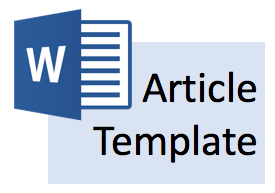Pengaruh Interaksi Terhadap Kepuasan Belajar dalam Pembelajaran Daring Pada Mahasiswa Pendidikan Ekonomi FKIP UNS Angkatan 2018-2021
Abstract
Keywords
Full Text:
PDF (Bahasa Indonesia)References
Almaleki, D.A., Alhajaji, R.A., & Alharbi, M.A. (2021). Measuring students’ interaction in distance learning through the electronic platform and its impact on their motivation to learn during covid-19 crisis. International Journal of Computer Science and Network Security, 21(5), 98112. https://doi.org/10.22937/IJCSNS.2021.21.5.16.
Alqurashi, E. (2019). Predicting student satisfaction and perceived learning within online learning environments. Distance Education, 40(1), 133-148. https://doi.org/10.1080/01587919.2018.1553562.
Arikunto, S. (2018). Prosedur Penelitian Suatu Pendekatan Praktik. Jakarta: Rineka Cipta.
Aydin, B. (2021). Determining the effect of student-content interaction, instructor-student interaction and student-student interaction on online education satisfaction level. In W. B. James, C. Cobanoglu, & M. Cavusoglu (Eds.), Advances in global education and research, 4. USF M3 Publishing. https://www.doi.org/10.5038/9781955833042
Bismala, L., & Manurung, Y.H. (2021). Student satisfaction in e-learning along the covid-19 pandemic with importance performance analysis. International Journal of Evaluation and Research in Education, 10(3), 753-759.
Fahri, L.M., & Qusyairi, L.A.H. (2019). Interaksi sosial dalam proses pembelajaran. Palapa: Jurnal Studi Keislaman dan Ilmu Pendidikan, 7(1), 149-166
Gavrilis, V., Mavroidis, I., & Giossos, Y. (2020). Transactional distance and student satisfaction in a postgraduate distance learning program. Turkish Online Journal of Distance Education, 21(3), 48-62.
Huang, C.H. (2021). Using PLS-ESM model to explore the influencing factors of learning satisfaction in blended learning. Education Sciences, 11(5), 249. https://doi.org/10.3390/educsci11050249.
Hakim, M., & Mulyaprada, A. (2020). Pengaruh penggunaan media daring dan motivasi belajar terhadap kepuasan mahasiswa pada saat pandemi covid-19. Widya Cipta: Jurnal Sekretari dan Manajemen, 4(2), 154-160.
Harahap, S.R. (2020). Proses interaksi sosial di tengah pandemi virus covid-19. Al-Hikmah: Media Dakwah, Komunikasi, Sosial dan Budaya, 11(1), 45-53. https://doi.org/10.32505/hikmah.v11i1.1837.
Hasanah, N.H., Sobry, M., & Anggraini, E. (2021). Analisis pelaksanaan pembelajaran daring di masa pandemi dalam perpektif strengt weakness opportunities threats (swot): studi di sd negeri 42 ampenan. el-Midad: Jurnal PGMI, 13(1), 15-27.
Indarti, Wahyuningsih, U., Yulistiana, Suhartini, R., Prihatina, Y.I. (2021). Faktor-faktor yang mempengaruhi kepuasan belajar jarak jauh mahasiswa vokasi di masa pandemi covid-19. Jurnal Pendidikan Teknologi dan Kejuruan, 18(2), 226-236.
Juhji., Rachman, M.S., & Nurjaya. (2020). Media daring dan kuantitas pemberian tugas terhadap kepuasan belajar mahasiswa. Al-Tarbawi Al-Haditsah: Jurnal Pendidikan, 5(2), 1-15.
Kumalasari, D., & Akmal, S.Z. (2020). Resiliensi akademik dan kepuasan belajar daring di masa pandemi covid-19: peran mediasi kesiapan belajar daring. Persona: Jurnal Psikologi Indonesia, 9(2), 353-368. https://doi.org/10.30996/persona.v9i2.4139.
Lin, X., & Gao, L. (2020). Students’ sense of community and perspectives of taking synchronous and asynchronous online courses. Asian Journal of Distance Education, 15(1), 169-179. https://doi.org/10.5281/zenodo.3881614.
Muflihatun, H.N., & Suryani, N. (2020). Pengaruh fasilitas belajar, kompetensi profesional guru, dan sistem pembelajaran moving class terhadap kepuasan belajar siswa. Economic Education Analysis Journal, 9(1), 215-227. https://doi.org/10.15294/eeaj.v9i1.37166.
Mulyapradana, A., Anjarini, A.D., & Harnoto. (2020). Pengaruh kualitas pelayanan terhadap kepuasan pelanggan di PT. Tempo cabang Tegal. Jurnal Ekonomi & Ekonomi Syariah, 3(1), 26-38. https://doi.org/10.36778/jesya.v3i1.115.
Muzammil, M., Sutawijaya, A., & Harsasi, M. (2020) Investigating student satisfaction in online learning: the role of student interaction and engagement in distance learning university. Turkish Online Journal of Distance Education, IODL, 88-96. https://doi.org/ 10.17718/tojde.770928.
Priyastuti, M.T., & Suhadi. (2020). Kepuasan mahasiswa terhadap pembelajaran daring selama pandemi covid-19. Journal of Language and Health, 1(2), 49-56.
Rafiola, R.H., Setyosari, P., Radjah, C.L., & Ramli, M. (2020). The effect of learning motivation, self-efficacy, and blended learning on students’ achievement in the industrial revolution 4.0. International Journal of Emerging Technologies in Learning (iJET), 15(8), 71-82. https://doi.org/10.3991/ijet.v15i08.12525.
Rahman, M.H.A., Uddin, M.S., & Dey, A. (2021). Investigating the mediating role of online learning motivation in the covid-19 pandemic situation in Bangladesh. Journal of Computer Assisted Learning, 1-15. https://doi.org/10.1111/jcal.12535.
Rajabalee, Y.B., & Santally, M.I. (2021). Learner satisfaction, engagement and performances in an online module: implacations for institutional e-learning policy. Education and Information Technologies, 26, 2623-2656. https://doi.org/10.1007/s10639-020-10375-1.
Rasulova, M. (2022). The role of student-student interaction in efl classroom. Eurasian Journal of Social Sciences, Philosophy, and Culture, 2(2), 63-66. https://doi.org/10.5281/zenodo.6022384.
Sabinah, S., Ramdhan, D.F., & Rohmah, S.K. (2021). Peran guru dalam pelaksanaan pembelajaran jarak jauh di tengah wabah covid-19. Edunesia: Jurnal Ilmiah Pendidikan, 2(1), 43-54. https://doi.org/10.51276/edu.v2i1.77.
Sadeghi, M. (2019). A shift from classroom to distance learning: advantages and limitations. International Journal of Research in English Education, 4(1), 80-88.
Sason, H., & Kellerman, A. (2021). Teacher student interaction in distance learning in emergency situations. Journal of Information Technology Education: Research, 20, 479-501. https://doi.org/10.28945/4884.
Saykili, A. (2018). Distance education: definitions, generations, key concepts and future directions. International Journal of Contemporary Educational Research, 5(1), 2-17.
Singh, V., & Thurman, A. (2019). How many ways can we define online learning? a systematic literature review of definitions of online learning (1988-2018). American Journal of Distance Education, 33(4), 289-306. https://doi.org/10.1080/08923647.2019.1663082.
Sugiyono. (2018). Metode Penelitian Pendidikan. Bandung: Alfabeta
Tadesse, T., Gillies, R. M., & Manathunga, C. (2020). The effects of informal cooperative learning pedagogy on teaching effectiveness, task orientation, and learning satisfaction in undergraduate classrooms in Ethiopia. Higher Education Research & Development, 1–19. https://doi.org/10.1080/07294360.2020.176532.
Yu, J., Huang, C., Han, Z., He, T., & Li, M. (2020). Investigating the influence of interaction on learning persistence in online settings: moderation or mediation if academic emotions, International Journal of Environmental Research and Public Health, 17(7), 1-21. https://doi.org/ 10.3390/ijerph17072320.
Zhang, Y., & Lin, C.-H. (2019). Student interaction and the role of the teacher in a state virtual high school: what predicts online learning satisfaction? Technology, Pedagogy and Education, 115. https://doi.org/10.1080/1475939X.2019.1694061.
Refbacks
- There are currently no refbacks.


